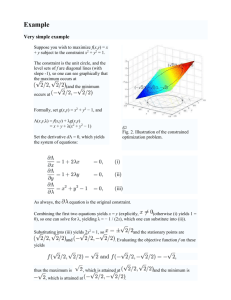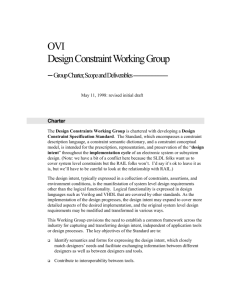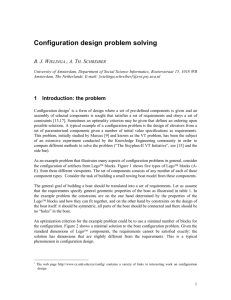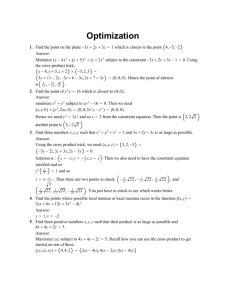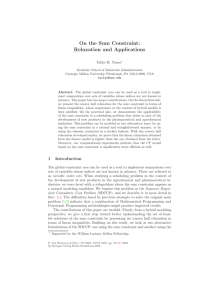handout#9
advertisement
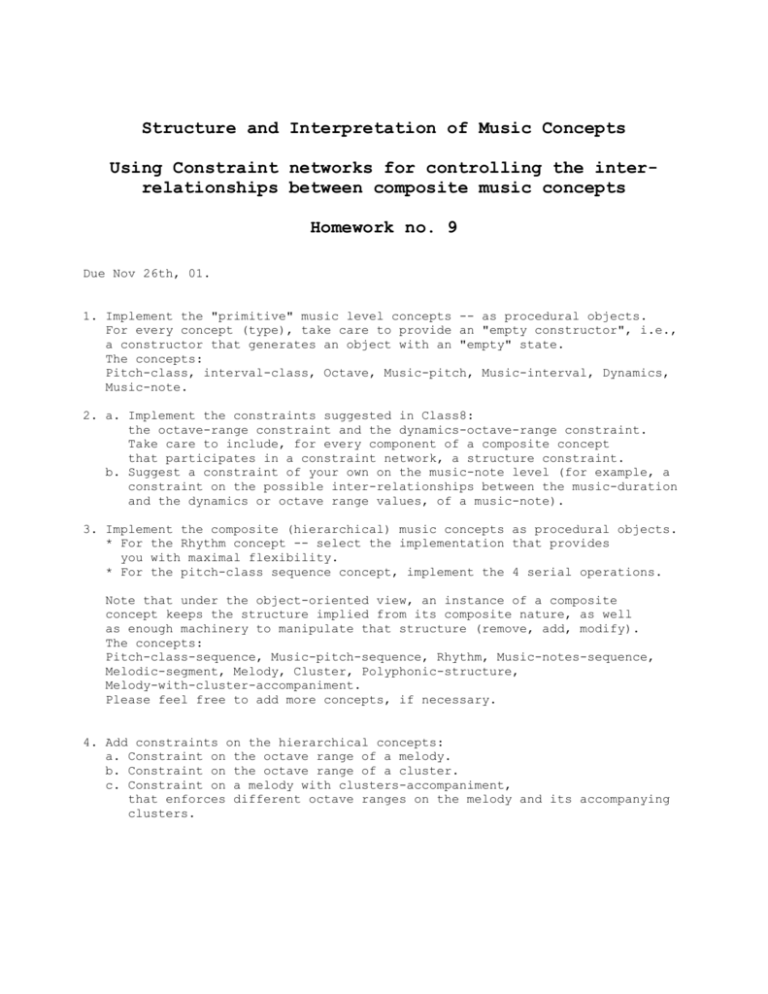
Structure and Interpretation of Music Concepts Using Constraint networks for controlling the interrelationships between composite music concepts Homework no. 9 Due Nov 26th, 01. 1. Implement the "primitive" music level concepts -- as procedural objects. For every concept (type), take care to provide an "empty constructor", i.e., a constructor that generates an object with an "empty" state. The concepts: Pitch-class, interval-class, Octave, Music-pitch, Music-interval, Dynamics, Music-note. 2. a. Implement the constraints suggested in Class8: the octave-range constraint and the dynamics-octave-range constraint. Take care to include, for every component of a composite concept that participates in a constraint network, a structure constraint. b. Suggest a constraint of your own on the music-note level (for example, a constraint on the possible inter-relationships between the music-duration and the dynamics or octave range values, of a music-note). 3. Implement the composite (hierarchical) music concepts as procedural objects. * For the Rhythm concept -- select the implementation that provides you with maximal flexibility. * For the pitch-class sequence concept, implement the 4 serial operations. Note that under the object-oriented view, an instance of a composite concept keeps the structure implied from its composite nature, as well as enough machinery to manipulate that structure (remove, add, modify). The concepts: Pitch-class-sequence, Music-pitch-sequence, Rhythm, Music-notes-sequence, Melodic-segment, Melody, Cluster, Polyphonic-structure, Melody-with-cluster-accompaniment. Please feel free to add more concepts, if necessary. 4. Add constraints on the hierarchical concepts: a. Constraint on the octave range of a melody. b. Constraint on the octave range of a cluster. c. Constraint on a melody with clusters-accompaniment, that enforces different octave ranges on the melody and its accompanying clusters.






